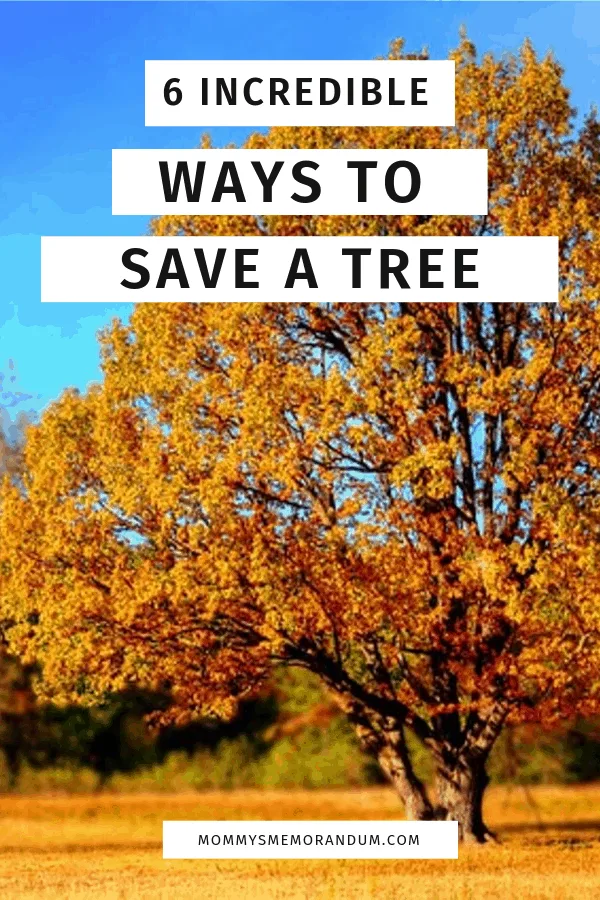Don't Leave Me: 6 Incredible Ways to Save a Tree
Knowing how to save a tree that is dying not only brings you the fulfillment of nurture, but it can help save the tree and the environment also.
There’s no other organism on earth that lives as long as a tree, with the oldest recorded tree being approximately 5,000 years old. These massive, beautiful beings do so much more than just what meets the eye–they clean the air and water, help cool your home and office by up to 20 degrees, and some can even “talk” to each other.
With all these benefits, it only makes sense that you would want to do your part and help protect and preserve a tree’s health, and when possible, save a tree that’s dying or damaged. If that’s how you feel, then keep reading to learn about some effective ways to help save a tree here.

Don't Leave Me: 6 Incredible Ways to Save a Tree
Find the Underlying Cause of the Problem
Before you can figure out what needs to be done to save a dying tree, figure out what the problem is. There are some signals you should look for to figure out if the tree is at risk of dying.
Some indications to look for include:
- Areas of decay
- Cracks on the trunk
- Weak or brittle wood
- Dry wood
- No or few leaves
Figuring out the specific cause of the problem is often challenging. It’s smart to consult with an arborist to learn more about the possible condition and what can be done about it.
The professional can help identify the type of tree you have, along with any insects and diseases it may be vulnerable to. It’s a good idea to contact a professional as soon as you suspect a problem with a tree on your property.
Correct Any Possible Watering Issues
Moisture problems are some of the most common reasons a tree may be dying. A mature tree may be affected by too little or too much water.
Dehydration is something that can kill any living being–animals, humans, and, yes, trees. To make sure the trees on your property remain sturdy and healthy, be sure you are watering them properly.
You also need to make sure the place where the tree is planted has adequate drainage. You can use your garden hose to create a stream of water and hold it for half a minute to two minutes. Make sure to control the nozzle and don’t drown the soil close to the tree with too much water.
Be Sure to Prune Your Trees Properly
If you want to play a role in saving a dying tree, it’s helpful to learn proper pruning techniques. If there are any diseased areas that are visible on an otherwise healthy tree, removing the diseased sections by pruning it can help save its life. Make sure you destroy any branches that are diseased and removed to keep the issue from spreading.
It's also necessary to properly sterilize any saws, knives, or shears used to trim away the diseased sections. Using these tools without cleaning them properly may spread the disease to other plants.
Use Fertilizers Properly
Another item that may help your tree if it is dying or diseased is the proper fertilizer. When you use fertilizers, make sure you don’t sprinkle or spray too much of it on the tree.
Before you decide that your dying or sick tree requires fertilizer, make sure you test the soil. This will let you know for sure if fertilizer is needed and if it’s going to help the problem.
When using fertilizer, make sure you follow the instructions provided by the manufacturer carefully, so you get the full benefits. If you're unsure, it’s best to consult with a professional.
Sometimes, the issue may not be the soil nourishment (or lack thereof) that has caused your tree to die. There may be other factors involved, too, such as dehydration or pests.
Mulch Matters
You may wonder how mulch could possibly help your dying tree. By mulching, you can nourish the soil that surrounds the tree. However, if this isn’t done properly, it may actually be harmful to the trees you are trying to save.
Make sure you don’t put too much mulch around the base of your tree. Instead, put just enough to let the roots breathe. It’s also important to dig the ground, so the mulch comes in direct contact with your tree’s roots.
It’s a good idea to dig to a depth of approximately five inches. You can then use your rake to spread and apply the mulch. Don’t apply more than 1.5 inches of mulch here. By doing this, you can prevent other tree-related issues, such as fungi and bacterial infections.
Call the Professionals
If none of your tree saving efforts are effective or successful, the best thing you can do is call a professional. They can evaluate the problem and determine the underlying cause of why a tree is dying. They can also provide professional advice regarding how to save the tree, or if it is time to remove it, so it doesn’t affect more trees nearby.
Doing Your Part to Save a Tree
When it comes time to save a tree, it’s a good idea to use the steps and tips here to make sure you do your part. After all, trees are a vital part of day-to-day life, so keeping them healthy should be a priority for everyone.
If you are looking for more home and gardening tips or some ideas for a home renovation, be sure to check out some of our other blogs. Our team is dedicated to publishing amazing, helpful content that will improve your life.

Comments
Post a Comment